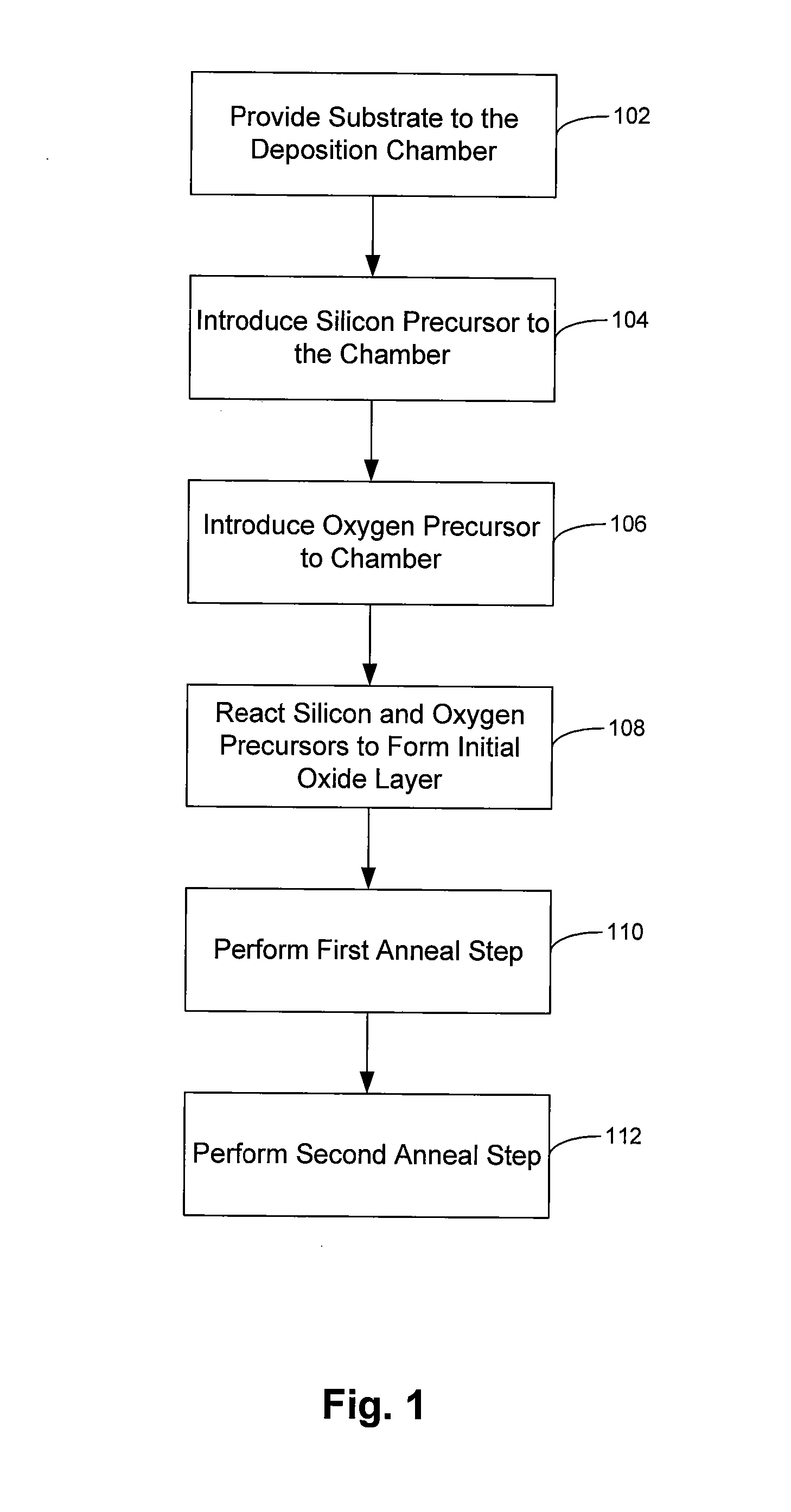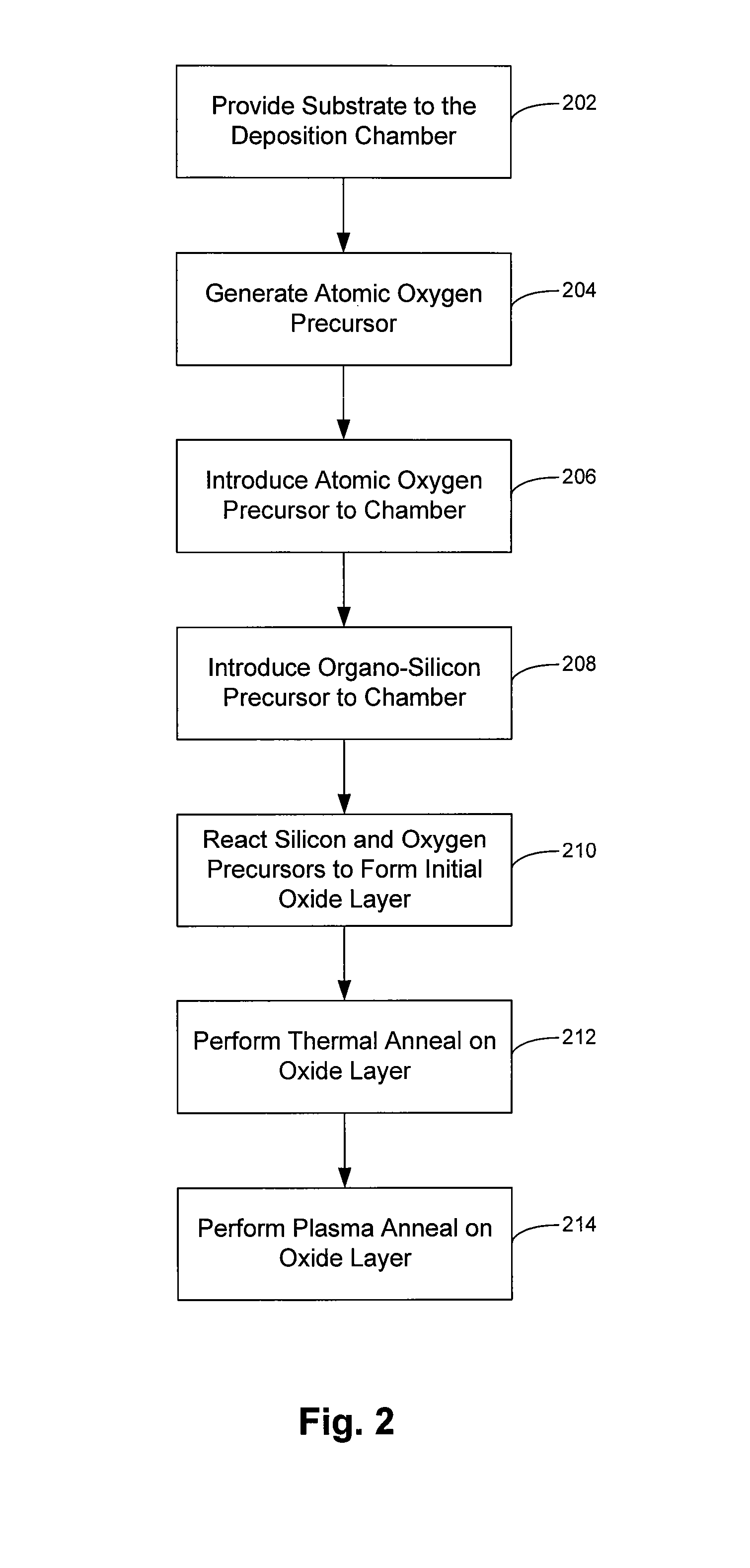Method for depositing and curing low-k films for gapfill and conformal film applications
a technology of conformal film and low-k film, which is applied in the direction of coating, chemical vapor deposition coating, coating process, etc., can solve the problems of low-moisture oxide film k-value, low k-value, werr, etc., and achieves the effect of reducing the k-value of low-moisture oxide film, and reducing the k-value of low-mois-
- Summary
- Abstract
- Description
- Claims
- Application Information
AI Technical Summary
Benefits of technology
Problems solved by technology
Method used
Image
Examples
Embodiment Construction
[0020] Systems and methods are described for multistage anneals of silicon oxide layers. The multistage anneal permits the efficient removal of moisture and silanol groups from an oxide layer without requiring high temperatures (e.g., temperatures in excess of 600° C.). The multistage anneal may include a first stage anneal that increases the hardness of the layer and removes a portion of the moisture and / or hydroxyl groups, and a second stage anneal that removes most (if not all) the remaining moisture and hydroxyl groups to produce a hard oxide layer (e.g., greater than 1 GPa) with good dielectric characteristics (e.g., k-value less than 3).
[0021] The multistage anneals can transform an initially deposited soft oxide film into a high-quality, low-k dielectric layer without requiring high temperatures or long anneal times (e.g., greater than 60 minutes). For carbon containing low-k oxide layers, the first stage of the anneal hardens the soft film to the point that a subsequent ann...
PUM
| Property | Measurement | Unit |
|---|---|---|
| temperature | aaaaa | aaaaa |
| temperature | aaaaa | aaaaa |
| pressure | aaaaa | aaaaa |
Abstract
Description
Claims
Application Information
 Login to View More
Login to View More - R&D
- Intellectual Property
- Life Sciences
- Materials
- Tech Scout
- Unparalleled Data Quality
- Higher Quality Content
- 60% Fewer Hallucinations
Browse by: Latest US Patents, China's latest patents, Technical Efficacy Thesaurus, Application Domain, Technology Topic, Popular Technical Reports.
© 2025 PatSnap. All rights reserved.Legal|Privacy policy|Modern Slavery Act Transparency Statement|Sitemap|About US| Contact US: help@patsnap.com



